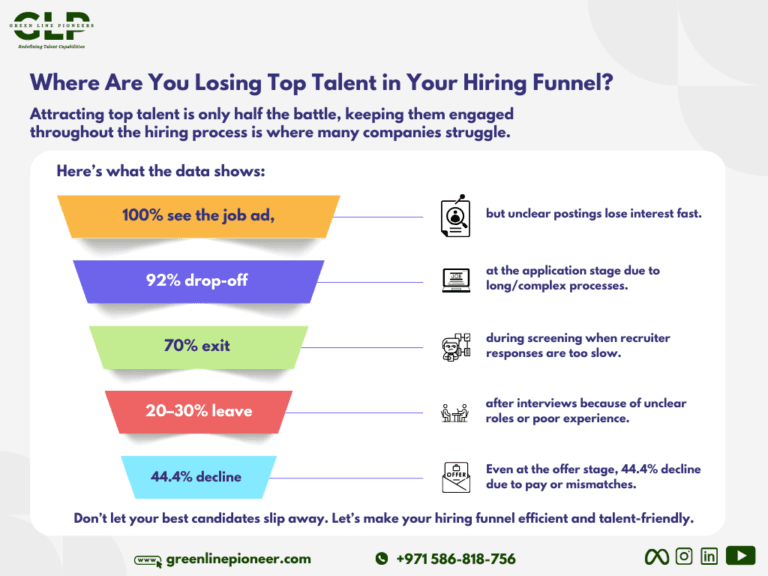The Hiring Funnel Drop-Off: Where Exceptional Candidates Disengage
The challenge in modern recruitment is not merely finding qualified candidates. It is maintaining the interest of the most sought-after professionals through a process that often feels designed to discourage them. Many organizations invest significant resources into attracting talent, only to see them disengage at pivotal moments due to preventable missteps.
Understanding where and why these drop-offs occur is the first step toward designing a hiring process that respects candidates and effectively secures key hires. Here is what the data reveals about each stage of the hiring funnel.
This article will clarify what sets these functions apart and explain why a strategic approach is necessary for long-term business health.
What is Recruitment? The Focus on Immediate Needs
Recruitment is a linear, reactive process. Its primary objective is to fill open positions as they become available. Think of it as a short-term solution to a pressing need.
Stage 1: Awareness – The First Impression
While your job post reaches 100% of its audience, an unclear or uninspiring description can immediately deter the very individuals you want to attract. Top talent looks for specificity, challenge, and cultural alignment. Vague requirements or a lack of meaningful detail signals a company that may not value the role—or the person who will fill it.
Stage 2: Application – The Friction Point
A staggering 92% of potential applicants abandon the process at this stage. The primary reason is a cumbersome application experience. Lengthy forms, demands for redundant information, and a lack of mobile optimization create unnecessary barriers. If the process feels disrespectful of a candidate’s time, they will assume the company culture is similarly inconsiderate.
Stage 3: Screening – The Communication Gap
Approximately 70% of remaining candidates exit during the screening phase. This drop-off is frequently attributed to a lack of communication. Slow responses from recruiters, ghosting after initial contact, or failing to provide a clear timeline leave candidates feeling undervalued. In a competitive market, silence is often interpreted as disinterest, prompting top performers to pursue other opportunities.
Stage 4: Interview – The Experience Deficit
Between 20% and 30% of interviewees withdraw after their meetings. A disorganized interview process, unprepared hiring managers, or a failure to clearly define the role’s responsibilities and impact can quickly erode confidence. The interview is a two-way evaluation; a negative experience can lead a candidate to reject a role they were once excited about.
Stage 5: Offer – The Final Hurdle
Even at the final stage, organizations face a significant risk, with 44.4% of offers declined. This frequently stems from mismatched expectations surrounding compensation, benefits, or professional growth opportunities. A prolonged hiring process can also lead candidates to accept other positions, making a delayed offer ineffective.
Securing the Talent You Need
The consistent theme is clear: exceptional candidates are not rejecting the company itself, but the process it employs. A negative hiring experience casts a long shadow, potentially damaging your employer brand and closing the door on future talent.
The solution requires a deliberate redesign of the candidate journey. This means crafting precise job descriptions, streamlining application steps, maintaining transparent communication, structuring respectful interviews, and presenting competitive, timely offers.
At Green Line Pioneers, we collaborate with organizations to transform their recruitment strategy. We focus on building efficient, candidate-centric processes that not only identify the right people but also ensure they remain engaged from initial contact to signed contract.
It is time to examine your hiring funnel. By addressing the points of disengagement, you can build a process that consistently attracts and secures the talent essential for growth.


Green Line Pioneers
Redefining Talent Capabilities
Explore us on Social Media